Japanese tattoos are famous for their symbolic, powerful and deep meaningful designs. Japanese tattoos have a tradition that has been followed for a quite a long time and integrated into western tattoo culture such as the popular Koi fish or Dragon designs. According to the Japanese culture, each tattoo worn has its meaning and purpose and is often viewed as a means to demonstrate social status. Japanese tattoo designs involve many features and also known for the beautiful artistic styles. The composition is done in a way that it flows so well even all the elements are spread to other parts of the body.
Japanese tattoos tell the stories of Japan, like tales of historical samurais, folk lore, legends, religion etc. Every little piece of Japanese tattooing has meaning. So, if you see a tattoo of a samurai holding a peach, there is a reason and it’s not just thrown in there.
Contents
- 1 Irezumi – History of Japanese Tattoos
- 2 Kanji Tattoo or Japanese Letters Tattoo
- 3 Tebori Tattoo
- 4 Japanese Dragon Tattoo Designs and Meanings
- 5 Japanese Phoenix Tattoo Designs and Meanings
- 6 Japanese Tiger Tattoo Designs and Meanings
- 7 Japanese Koi Fish Tattoo Designs and Meanings
- 8 Japanese Snake Tattoo Designs and Meanings
- 9 Japanese Elemental Tattoos (Wind & Water, Rock & Earth, Fire)
- 10 Japanese Mask Tattoo Designs and Meanings
- 11 Japanese Flower Tattoo Designs and Meanings
Irezumi – History of Japanese Tattoos
Irezumi is the Japanese word for Tattoo, it means Inserting Ink. Irezumi is done by hand, using a wooden handle and metal needles attached at the tip via silk thread. A special ink is used for Irezumi called Nara ink. It is a very painful and lengthy process done by special tattoo artists called Horishi who study and train for years to master their craft.
It is believed that tattooing existed in Japan as early as 10,000 BC. When the Chinese first visited Japan in third century they mentioned in their first written record that Japanese people tattooed themselves to mark their social class or ranks and protect themselves from harmful sea creatures.
From the early 19th century to the end of world war II, tattooing was illegal in Japan. During the U.S. Occupation (1945-1952), the tattoo ban was finally lifted, however the ban was only applied to the Japanese people. In Japan the tattoo expression was highly oppressive and had become associated with highly organized mafia group called Yakuza. A body suit tattoo most common among the members of Yakuza became a rite of passage, a physical test and sign of a powerful affiliation to this Japanese mafia group.
The Colors of Irezumi
There is a strong significance and a cultural connection between the usage of colors in Japanese tattoos and Japanese culture. The first Japanese tattoos were dark. By early 18th century, the Irezumi palette had expanded to what is considered its traditional color set; black, red and all shades of thereof. Red, with its solar connotation remained one of the Japan’s most important and oldest colors. The colors that are used in Irezumi (Japanese Tattoos) have a strong connection to the nature, whether it is red symbolizing the sun, yellow with its earthy and religious connotations or blue and green to represent water and creation. By combining these basic colors, different shades are created to bring swirling clouds, crashing waves or seasonal flowers to life.
Kanji Tattoo or Japanese Letters Tattoo
Kanji are the Chinese characters that are used in the Japanese scripts. Japanese writing is beautiful with flowing characters and pictographs and they have found their way into tattoos in various forms over the centuries. In Japanese, each Kanji character can have several different readings and some Kanji can sound the same but have totally different meanings.
The Kanji used in modern china and Japan look different so don’t mix them when you are getting a Japanese Kanji tattoo.
Common Japanese mottoes and mantra’s used in Kanji tattoos:
Akuin Akka 悪因悪果
“Cause evil, create evil”. This essentially means “You reap what you sow”.
INOCHI 命
“Life”. People often put their loved one’s name in front of this Kanji.
Namu Myōhō Renge Kyō 南無妙法蓮華經
“Devotion to the Mystic Law of the Lotus Sutra or Glory to the Sutra of the Lotus of the Supreme Law”. Buddhist mantra from the Lotus Sutra.
Kanji are beautiful and can make meaningful tattoos.
How to get a good Kanji tattoo?
- Check the Kanji
- Check the tattooist
- Remember Kanji tattoo is not a design
- Do not use machine translation
- Do your research
Kanji Tattoo Designs
Tebori Tattoo
What is Tebori Tattoo?
Tebori is traditional Japanese method of tattooing done by hand. In English this method is often called “hand-poked” tattooing but not exactly the same besides the concept of inserting the ink to the body. Traditional Tebori uses a tool called ‘Nomi’ that is made from a slender piece of bamboo and silk string at the pointy end (tip). Nomi can be made out of wood or metal as well with needle tips that can be easily removed and sterilized. The tool sometimes has a grip for the tattooer to hold while inserting the ink.
Types of Tebori
There are different Tebori styles based on how the tools are held or the way ink is inserted and also specific to different regions throughout Japan.
Tebori Techniques and Styles:
HANEBORI – A Tebori technique often used for shading, in which the needles are inserted in the skin and then slightly flicked upward while the tool is pulled back. This technique allows more ink to enter the skin but may also cause more bleeding.
IMOTSUKI – A style of Tebori that insert ink in a rhythmic up-and-down motion similar to that of a tattoo machine.
SHAMISENBORI – This is a nearly extinct style of tattooing that uses needles attached to the flat end of a handle that resembles a shamisen pick. The tool is held like a pencil and the ink is inserted in an upward-moving motion.
TSUKIBORI – “Tsuki” means “jab” or “stab” in Japanese. A long Tebori tool is used for this technique. Unlike HANEBORI, there is no upward-flicking motion. This is simply puncturing skin with the Tebori tool.
Japanese Dragon Tattoo Designs and Meanings
While the European dragons are more lizard-like, the Japanese dragon resembles more of a snake. The Japanese dragons are very much influenced by the Chinese dragon motifs that were imported from china around the seventh century. Japanese dragon is a combination of several different animals; the head of a camel, the eyes of a rabbit, the horns of a deer, the scales of a carp, the body of a snake, the paws of a tiger and the claws of an eagle. In those claws it holds an orb that some says is a jewel, others claim is a pearl of knowledge.
Japanese dragons and Chinese dragons certainly resemble each other. Both are connected to water and have snake like bodies. The differences between a Japanese dragon and Chinese dragon are very subtle. For example, Japanese dragons tend to be slightly skinnier than the Chinese dragons and have three claws instead of four or five like the Chinese imperial dragons.
Typical Irezumi motifs show dragons swimming in water or flying through the clouds. Dragons can be shown ascending up the body in Japanese tattoos called nobori-ryu, or descending known as kudari-ryu. However, they can be depicted with a background or individually as a standalone tattoo.
One of the most popular pairing is Dragon and Tiger, which is known as Ryuko, literally means “dragon and tiger”. The idiomatic meaning of this pair is “Two great rivals”. They are both incredibly powerful creatures, dragons rule the sea and air and tigers dominate the land.
Japanese Phoenix Tattoo Designs and Meanings
The phoenix is one of the most colorful creatures in Japanese tattoo designs. Originally Chinese and also called the “King of Birds” often paired with the Peony, which is the King of flowers. Unlike the phoenix of Greek, Roman or Egyptian tradition which rises or reborn from the ashes, in Asian tradition phoenix appears when a ruler is fair and righteous.
In china, one gets a phoenix tattoo by mixing and matching features of various feathered creatures, such as the head of a Golden pheasant, the body of a Mandarin duck, the tail of a Peacock and the wings of a Swallow. This creature was imported to Japan around 6th century from China. Overtime the original design of the Chinese phoenix was swapped by the native birds such as Japanese long-tailed chicken and a Japanese crane. The Phoenix is seen as female symbol and that is why it gets paired with the dragon which is a male symbol. The pairing of phoenix and dragon in Japanese tattoos can symbolize balanced rules, fairness and strength, combined with intelligence and power.
Japanese Tiger Tattoo Designs and Meanings
Tigers are not indigenous to Japan. Around the 7th century, tigers’ images were imported to Japan along with Chinese astrology. Since Japanese artisans were initially working from Chinese motifs and not from the actual tigers, the design became more stylized and probably the reason why you will find tigers with unnaturally large eyes in Japanese art. In Japanese tattoos, tiger is often portrayed with bamboo or climbing on rocks, both represent strength. In Irezumi tigers often have their mouths open to ward off the evil spirits. This makes them an ideal pair for a closed-mouth dragon whose mouth is closed to keep the good spirits from escaping.
In Chinese astrology, the tiger represents wind and the dragon represents water. Together they create a perfect wind-water or Feng Shui motif and probably explains the reason for their popularity in Zen Buddhism and in Japanese Tattoos.
Japanese Koi Fish Tattoo Designs and Meanings
The Koi fish is one of the most powerful symbols within Japanese tattoo art and has transcended boundaries across tattoo cultures. For Japanese, there is no braver or more virile fish than the carp or the Koi. Koi fish symbolizes good luck and fortune, where the legend goes that it has the ability to overcome adversity. The story is told that the Koi can climb a waterfall in spite of the heavy water flow facing it and reach to the top. This tattoo therefore symbolizes a person’s aspiration to improve themselves through tasks such as the water facing the fish. In addition, there are many different colorings of Koi tattoo which bring a deeper meaning to them.
Red Koi – This specific variance of tattoo represents love. Red is considered energetic and is one of the most commonly tattooed versions of Koi seen in modern day culture.
Black Koi – This form of art is related to a person overcoming an obstacle in their life with success. It can be many forms of adversity that they may have faced but once again the Black Koi represents overcoming challenges.
Koi has been used in many yin-yang tattoo designs, showing them swimming in circle. The black Koi represents the male and the red Koi represents the female.
In Irezumi Koi are often paired with maple leaves, splashing waves, cherry blossoms or peony.
Japanese Snake Tattoo Designs and Meanings
In Japanese culture the snake is seen as phallic and sexual as well as dangerous. Like the Dragon, snake is protective and connected to water. In the past, the snake was also seen as immortal because it’s ability of shading skins. White snakes or “shirohebi” in Japanese are rare in Japan and are believed to be signify good fortune.
Since snakes stay in the burrows during the winter and come out of hibernation in spring, they get paired with peonies to represent spring. Snakes are often paired with roses instead of peonies as roses are rich with symbolism in modern-day Japan, representing love, passion and prickly side of beauty.
Japanese Elemental Tattoos (Wind & Water, Rock & Earth, Fire)
Tattoo motifs of wind and water are trans-seasonal. They are often used as unifying elements across the background of a tattoo making a connection between all the isolated images on the skin. Connecting different tattoo elements with an overarching design is a defining element of Japanese tattoos.
Japanese Wind & Water Tattoo Designs and Meanings
Wind and Water look very similar in Japanese tattoos. Both are depicted with bar like designs, traditionally in black. Depending on the main motif or overall design they can be placed on various parts of the body. Wind will have some swirls as well as some puffy clouds placed in the swirls, while water has crashing waves often with smaller waves breaking from the larger ones. Soft color gradation and fractal lines give Japanese waves their distinct look and flow.
Japanese Rock & Earth Tattoo Designs and Meanings
Many of the rocks that appear in Japanese tattoo are based on Suiseki (Small naturally occurring or shaped rocks which are traditionally appreciated for their beauty and shapes. They are similar to Chinese scholar’s rocks.). Rock and Earth provide a stage for large back piece that gives a real-world setting to the tattoo design.
Japanese Fire Tattoo Designs and Meanings
In Japanese tattoos, fire often serves the same design function as wind and water. Fire is a natural element but it often carries mystical connotation in Irezumi. Fire represents purification and purity. The Buddhist priests burn cedar during fire rituals to cleanse negative energy. In Japanese tattoos flames look similar to the fractal water designs but they aren’t depicted as crashing down like the waves.
Japanese Mask Tattoo Designs and Meanings
In the thirteenth century masks were used in the theaters to portray different characters. Of all the Japanese masks Noh mask is said to be the most artistic ones. Masks represents age, gender and social ranking of human or non-human being like animal, demon or divine. There are many types of Noh masks but the most popular are the Hannya and Oni mask used in Japanese tattoo designs.
Hannya Mask Tattoo Designs and Meanings
Depicting a serpent-demon with horns. This Noh mask is perhaps one of Japan’s most iconic artistic designs. In Japanese tattoos horned Hannya masks are depicted in different colors. The white ones are for upper-class characters, while red variations are for lower-class characters or true demons. In Japan horns represent anger. Hannya mask is complex, it can express a range of emotions like rage, jealousy and sorrow just by tilting or angle of the mask. In Japanese tattoos Hannya mask can be a stand-alone piece but they can also be grouped with other masks.
The Oni Mask Tattoo Designs and Meanings
Oni translated as “ogre” or “demon” in Japanese folklore and also known as Demon mask. In Japanese folklore, Oni is the demon associated with all kinds of evil and distressful emotions. These demons are said to lurk around the dying, rushing in to pull the soul down to hell. In Japanese tattoos Oni mask refers to the belief in a spirit world in which demons carry out their roles of punishing the unjust and evil.
Japanese Flower Tattoo Designs and Meanings
There are many different flowers used in Japanese tattoo designs. Many of them have roots in traditional Japanese religion, folklore, literature and art. Below is a list of some of the most popular flower motifs used in Japanese tattoos.
Japanese Cherry Blossom Tattoos
In Irezumi the most popular seasons are spring and autumn. During these bright and colorful in-between times, everything is in flux and either coming to life or beginning to wither. In Japan, nothing sums up the country’s beauty better than the cherry blossom or shakura in Japanese. Cherry blossoms also represent feminine beauty but because of their short bloom it has have a masculine meaning symbolizing the short life of a samurai warrior.
Japanese Peony Tattoos
In Japan, the peony is called the king of flowers, with connotations of nobility, honor and beauty. Peonies bloom in spring and early summer. In Japanese tattoos the peony can be a standalone motif but also paired with cherry blossoms sometimes. Both the flowers compliment each other. Peonies and cherry blossoms both represent spring in Japan and used as imagery of Buddhism. Pairing the blossoms together can give a religious meaning to the tattoo.
Japanese Lotus flower Tattoos
The lotus is a symbol of purity. Since it sprouts from the muddy waters, the lotus shows that the beauty can come from unexpected places. It is rich with divine symbolism and also represents enlightenment. In Japanese tattoos, lotus flower is typically paired with Buddhist imagery. The lotus also makes a fine stand-alone tattoo.
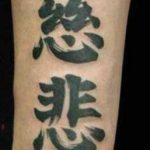
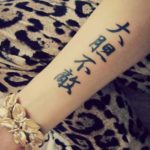
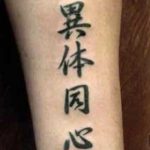
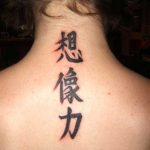
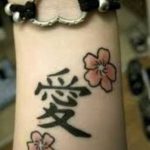
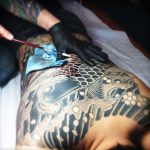
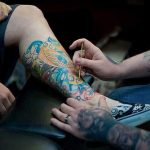
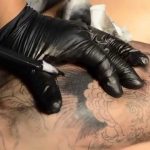
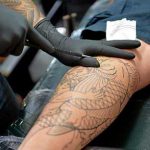
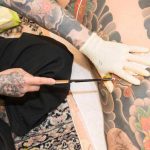
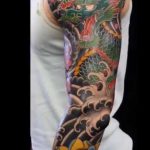
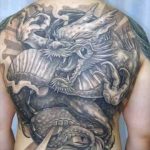
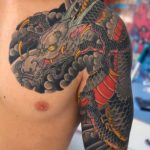
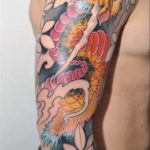
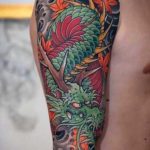
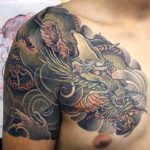
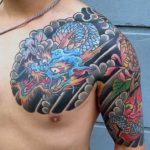
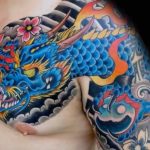
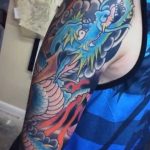
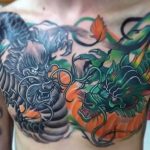
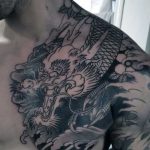
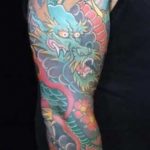
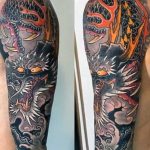
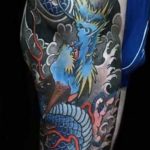
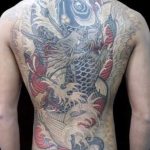
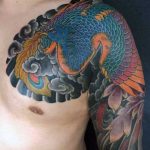
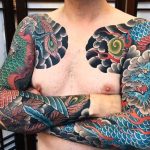
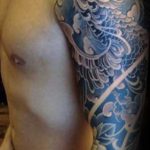
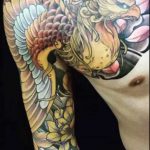
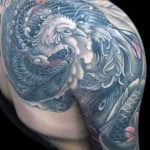
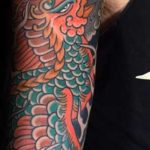
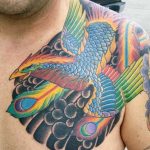
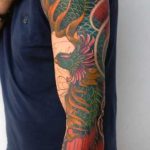
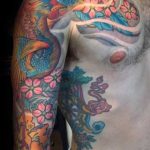

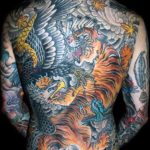
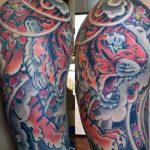
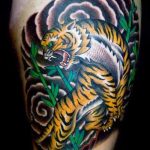
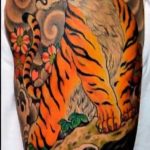
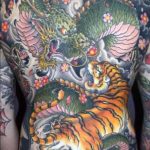
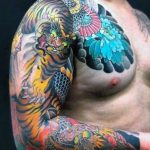
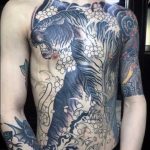
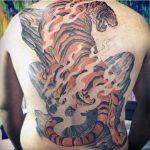
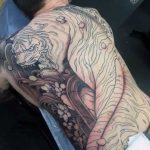
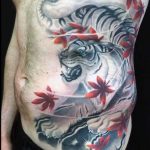
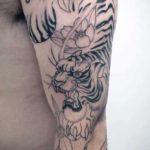
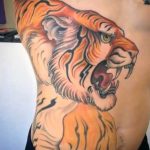
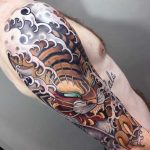
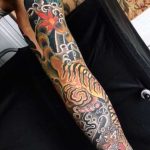
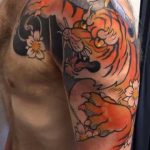
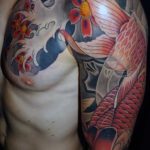
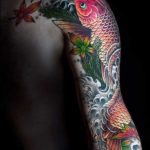
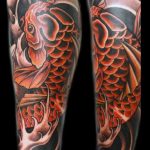
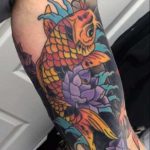
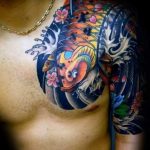
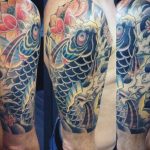
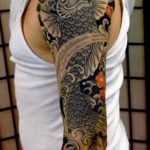
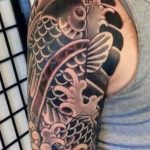
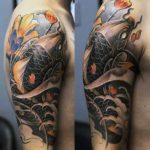
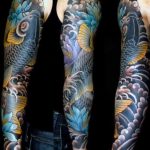
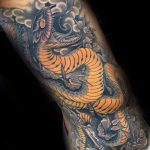
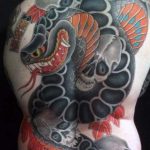
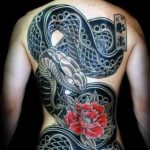
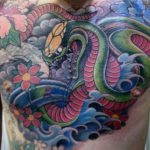
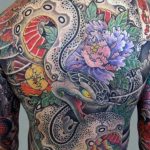
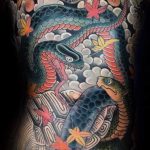
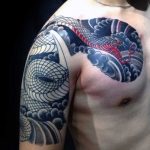

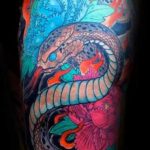
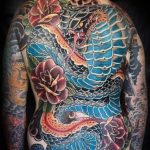
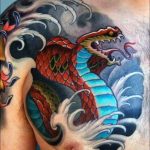
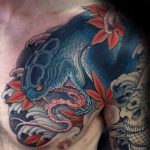
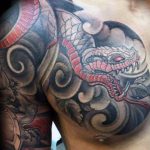
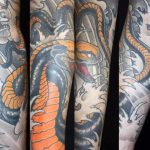
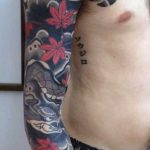
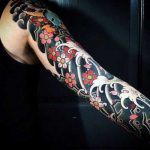
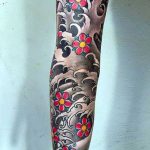
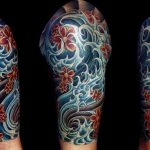
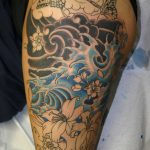
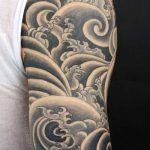
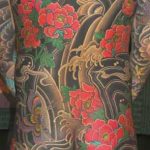
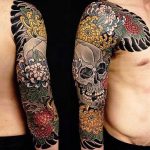

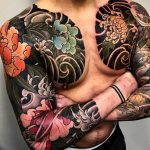
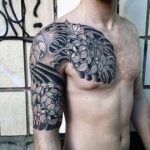
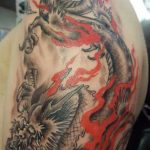
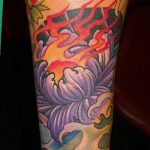
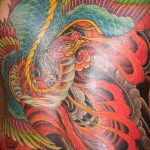
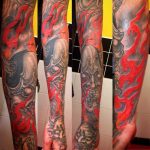
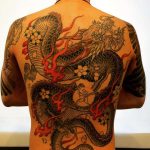
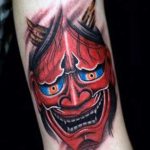
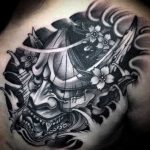
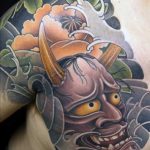
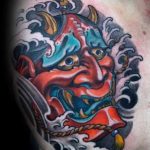
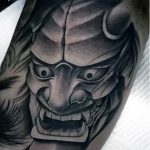
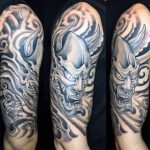
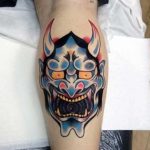
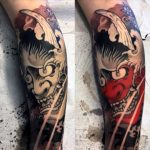
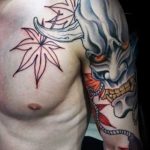

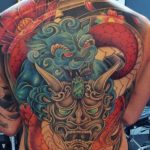
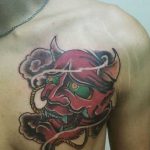
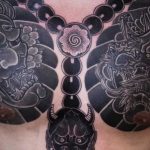
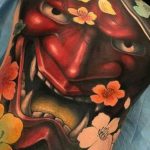
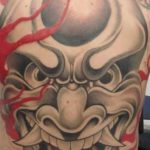
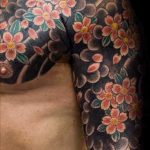
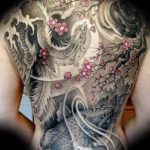
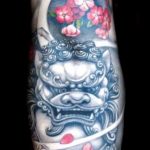
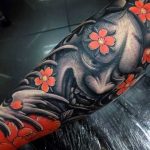
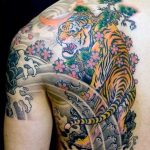
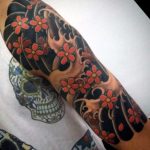
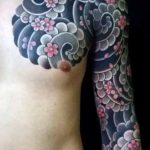
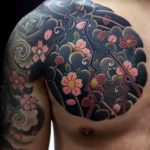
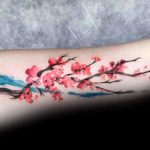
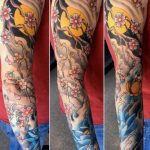
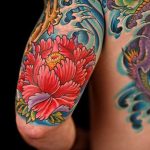
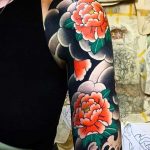
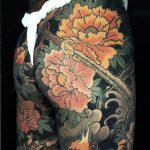
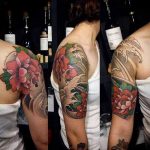
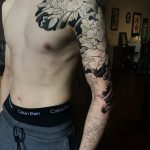
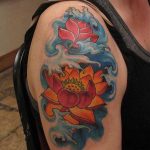
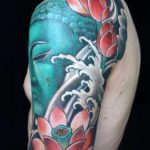
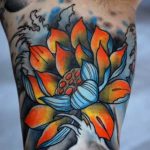
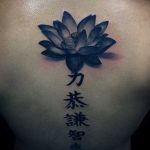
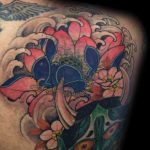
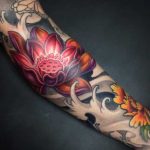
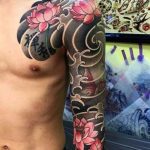
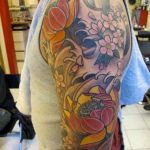
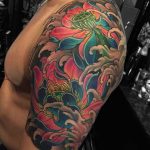
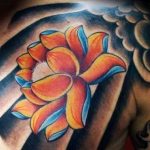
I am so very interested by Japanese tattoos. It maybe because i am half Japanese & was not taught much of the culture sadly. I have naturally attraction to all the different art styles. Ty so very much for sharing.